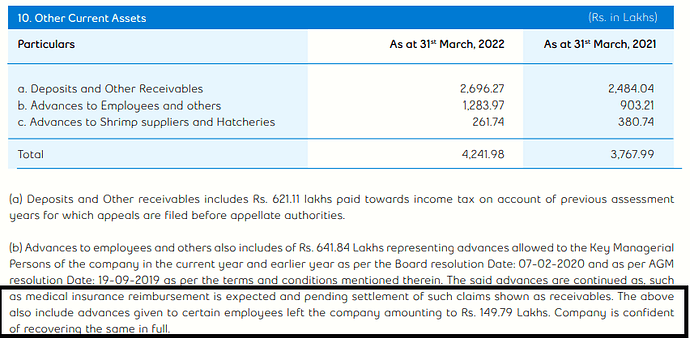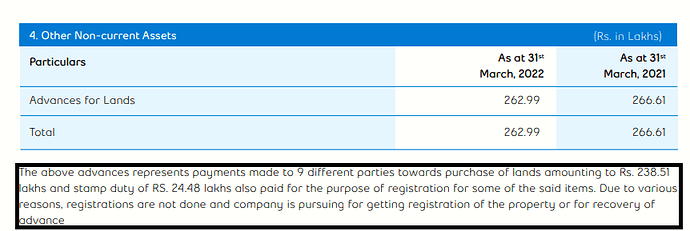Apex Frozen Foods Q3FY23 earnings call highlights.
-
On the demand front, demand from our major markets continues to be subdued due to inflationary pressures that are being witnessed across the world and in developed markets, in particular. In specific with regard to the US markets, the inflationary pressures have caused a blip in demand as a general increase in costs has meant that some of it had to be passed on to the customers.
-
with regard to the EU market, the business in the EU has been very steady. And in fact, we have improved on that front with our volumes, which we have picked up with EU. And we are very confident that we will be continuing to grow our EU market share in a much aggressive manner. However, we are still awaiting for the approval of the Ready-to-Eat products for the EU market as the status remains the same as it was for the past 3 years.
-
But the positive sign, of course, is that the EU health authorities have visited India, and we are hoping that now they are going to decide about approving newer facilities out of India in the next 1 to 2 months. So, we are now much closer to getting our approval for our EU markets with regard to Ready-to-Eat products.
-
With regard to the Chinese market, which was around 3% of our sales. With the opening up of the Chinese economy and the removal of a lot of COVID-related restrictions, we definitely see a revival in demand, and it is going to pick up much better over the next couple of quarters, for sure, as they clear up their Chinese spring festival or Chinese New Year period holiday once they are getting completed later into this month. So they are placing their orders also. And we are confident that we’ll be picking up much better over the next two quarters.
-
On the supply side, as we had mentioned in our last call, we had challenges in procuring specific sizes of shrimp to meet our orders. This situation seems to be easing to a certain extent. And we are hoping that the harvesting of the stock that has been sown in this season, the seed, which has been sown in the season will further add to the availability of desired sizes for our key markets from March 2023. Till then farm gate prices do continue to remain firm on the back of lower supply.
-
The total shrimp sales in nine months FY’23 grew by 6% yearon-year to 10,193 metric tons, while the average realization grew by 10% year-on-year to Rs 798 per kilo, translating into a net revenue growth of almost 16% year-on-year to Rs 813 crores.
-
for the nine months, our Ready-to-Eat segment registered a growth of 20% on a year-on-year basis from 1,912 metric tons in nine months of FY’22 to 2,305 metric tons in 9 months of FY’23. Ready-to-Eat product share increased to 23% versus 20% with an upward trend, thereby validating our decision to expand the Ready-to-Eat capacity from 5,000 metric tons per annum to 10,000 metric tons per annum at our new processing plant G. Ragampeta.
-
In Q3 FY’23, shrimp sales grew by 1% year-on-year on account of winter demand in key markets of U.S.A. and EU and supply constraints in specific sizes. Profitability was impacted on account of higher raw material costs, even as global shrimp prices were tapering off, as well as, as I mentioned, some of the higher cost inventories, which was there in earlier quarters. And as well as some one-time provisioning of expenses to the tune of almost Rs 1.35 crores to Rs 1.5 crores
-
with regard to the RTE, since we are adding the second line, we had to shut down the facility for some period. So that also definitely impacted our true capacity of RTE products during that period as you cannot do installation of production lines in an existing facility while the production is being done. So that definitely has hampered our Q3 production ability, but that has been restored to normalcy in Q4 as we are planning to start our trial production also towards the end of this month, especially in March, we are going to do a trial production. Now, with regard to where these products are going to go to, we are still having our major bets on the US market. But definitely, when the EU approval fully are received by us by April or May we are expecting it to be completed because they finished their visit recently, as I mentioned in the opening remarks, so once the approvals are received, we will also be diversifying to the EU market to the RTE products.
-
With regard to the first crop, we have had basically all the farmers very enthusiastic with regard to their pricing, the farm gate pricing being very stable. And so, they have been stocking the field in a very aggressive manner, not only just in Andhra Pradesh, this time because of the areas in West Bengal and Orissa which did not go for second crop in the calendar year 2022, have also gone for an early first crop this year in 2023 compared to the earlier years because they were having empty ponds basically for a significant period towards the end of 2022, as they didn’t go for the second crop.
-
the Chinese importers are continuing to buy at the current market prices without any issues or problems with regard to receiving of shipments and paying of payments as far as - - since January or towards the end of December, there has not been any issue actually. In early and mid Q3 our company also did give a little bit of discounts in few shipments in China, but majority of the shipments were done without any discounts. And subsequently, the business has resumed to normalcy.
-
Currently for the nine months, of course, we have utilized almost 47% of our total capacity. But the thing is now with this added line, we are quite positive that we will be focused more on Ready-to-Eat products, and we will be utilizing at a much higher rate of the Ready-to-Eat capacity of 10,000 metric tons, which will be completely available from the middle or rather, let us say, from the beginning of the financial year FY’24. So we are quite positive of utilizing them.
-
EU side, we are somehow more positive or more inclined towards retail. As you know, in markets like China, it’s all commodity-based, it mostly goes into distribution. But the U.S., we are putting in efforts for both. So, we are maybe for some parts of the year, depending on the seasonal consumption, retail could be much higher. But during summer when the sales are more through the restaurants, food service also picks up. But overall, it is split between both of them for us, for our company, specifically.
-
Margins: On an average, we look at it approximately in a normal case, it will be anywhere between $0.50 to $1 per kilo. But in a subdued demand, even if it comes down, it is around $0.25 to $0.30 per kilo minimum difference will be there between Ready-to-Cook and Ready-to-Eat. So at any given point of time, we have around $0.50 per kilo difference on an average because it includes multiple sizes, but on an average, if you see as a general thumb rule $0.50 per kilo additional margin would be there.
-
the increase in revenue with regard to 5000 MT additional capacity, if we utilize the 50% of the additional capacity, approximately that gives us additional around Rs. 200 crores of revenue on export sales alone, if we are utilizing in the first year. And thereafter, it is going to be picked up much higher for sure. But we see an incremental revenue of minimum of Rs. 200 crores only to that aspect.




